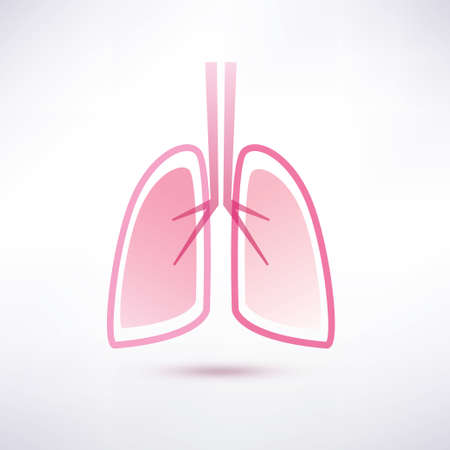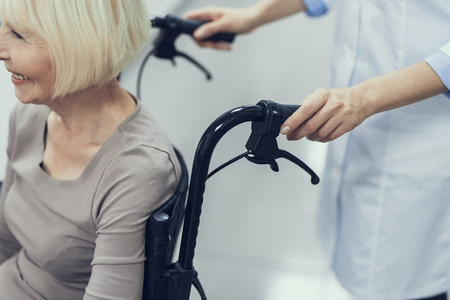Understanding ACL Tears in British Sport
The anterior cruciate ligament (ACL) is a vital structure in the knee that provides stability and helps control movement, especially during activities involving sudden stops, pivots, or changes in direction. In the UK, ACL tears are a significant concern for both amateur and professional athletes across a wide range of sports. Football (soccer), rugby, netball, and hockey are particularly associated with a higher risk of ACL injuries due to their dynamic and high-impact nature.
Recent studies indicate that the prevalence of ACL injuries is rising among British athletes. For professionals, the pressure to perform at elite levels often leads to intense training regimens and competitive matches that can put excessive strain on the knees. However, amateur players are also at risk, especially as many participate in local leagues without access to the same level of conditioning or medical support as their professional counterparts. Amongst women athletes in particular, there is a notably higher incidence of ACL tears, partly due to anatomical and biomechanical factors.
Common causes of ACL injuries within UK sports include awkward landings from jumps (as seen in netball or basketball), direct collisions (common in rugby), rapid deceleration or change of direction (frequent in football), and even simple missteps on uneven playing surfaces. Understanding these mechanisms is crucial for both prevention and effective rehabilitation, ensuring that athletes at all levels can return safely to their sport.
2. Diagnosis and Immediate Management
Early recognition of an ACL tear is crucial for effective management and optimal recovery, whether you are an amateur footballer in a local Sunday league or a professional rugby player representing your club. Understanding the typical symptoms and knowing the appropriate steps to take within the UK healthcare system—either through the NHS or private sector—can make a significant difference in your rehabilitation journey.
Recognising an ACL Tear: Key Symptoms
| Symptom | Description |
|---|---|
| Popping Sensation | A sudden pop in the knee at the moment of injury, often described by athletes. |
| Pain and Swelling | Rapid swelling usually develops within hours, accompanied by pain making weight-bearing difficult. |
| Knee Instability | Sensation of the knee giving way, especially during pivoting or turning movements. |
| Limited Range of Motion | Difficulty fully straightening or bending the knee due to swelling and discomfort. |
Immediate Care Pathways in the UK
If you suspect an ACL tear, it’s important to act swiftly. Immediate steps include:
- Rest: Cease sporting activity immediately to prevent further damage.
- Ice: Apply an ice pack (wrapped in a tea towel) to reduce swelling. Use for 20 minutes every 2-3 hours.
- Compression: Use an elasticated bandage or knee sleeve for support, being careful not to restrict circulation.
- Elevation: Keep your leg raised above heart level whenever possible to minimise swelling.
- Avoid Heat and Massage: In the first 48 hours post-injury, avoid hot packs and massage as these can exacerbate swelling.
Navigating the NHS and Private Healthcare Options
The pathway for diagnosis and management can vary depending on whether you use NHS services or opt for private care:
| NHS Pathway | Private Healthcare Pathway |
|---|---|
| – Book an appointment with your GP as soon as possible. – Your GP may refer you for an MRI scan and orthopaedic assessment. – Waiting times can vary depending on local resources. |
– Contact a private physiotherapist or sports medicine clinic directly. – Faster access to MRI scans and consultant appointments. – Costs are typically covered by private health insurance or self-payment. |
When to Seek Specialist Advice?
You should seek urgent medical attention if you experience severe pain, marked instability, inability to bear weight, or if there is obvious deformity. For most suspected ACL injuries, early referral to a physiotherapist or sports injury specialist is recommended within both NHS and private settings. Early intervention supports better outcomes and ensures you are guided towards the most appropriate rehabilitation plan tailored to your sporting needs.

3. Surgical and Non-surgical Treatment Options
When it comes to managing ACL tears among British athletes, both amateur and professional, there are two primary paths: surgical intervention and non-surgical (conservative) management. The decision-making process is multifaceted, taking into account individual needs, sporting ambitions, and medical factors.
Surgical Management: An Overview
Surgery—typically ACL reconstruction—is often recommended for athletes with complete tears or those aiming to return to high-demand sports such as football, rugby, or netball. The procedure involves replacing the torn ligament with a graft, commonly sourced from the patient’s own hamstring or patellar tendon. In the UK, post-surgical rehabilitation protocols are well-established within the NHS and private sectors, focusing on restoring knee stability, strength, and function over several months.
Pros of Surgical Intervention
- Greater likelihood of returning to pre-injury levels in pivoting sports
- Reduced risk of recurrent instability
- Structured post-op rehabilitation supported by UK-based physios
Considerations and Risks
- Risks include infection, stiffness, and re-rupture
- Lengthy recovery time (6-12 months)
- Access to timely surgery may vary depending on NHS waitlists or private care options
Non-surgical (Conservative) Management
For less severe tears, partial ruptures, or athletes who participate in lower-impact sports—or for those who do not wish to undergo surgery—non-surgical management may be suitable. This approach centres around physiotherapy-led rehabilitation programmes available throughout the UK, which emphasise muscle strengthening, proprioceptive training, and gradual reintroduction to sport.
Advantages of Conservative Management
- No surgical risks or complications
- Shorter initial recovery period
- Suitable for athletes not involved in high-risk activities
Potential Limitations
- Possible persistent instability during pivoting movements
- Not ideal for those wishing to return to elite-level competitive sport
Factors Affecting Treatment Decisions in the UK Context
The choice between surgical and non-surgical treatment is influenced by several factors:
- The athlete’s age and overall health status
- The level and type of sport played (e.g., contact vs. non-contact)
- The degree of knee instability experienced during daily activities or sporting drills
- Personal goals: Is a full return to competitive play essential?
A collaborative approach—often involving orthopaedic consultants, physiotherapists, coaches, and the athlete themselves—is vital for selecting the most appropriate path forward. Ultimately, both treatment routes have enabled countless British athletes at all levels to regain function and confidence following an ACL tear.
4. Rehabilitation Journey: From Injury to Return to Play
Recovering from an ACL tear, whether you’re an amateur or a professional British athlete, requires a structured and evidence-based rehabilitation pathway. In the UK, physiotherapy best practices are guided by current clinical guidelines and are tailored to each individual’s needs, ensuring both safety and optimal performance upon return to sport.
Staged Rehabilitation Process
The rehabilitation journey is typically divided into distinct phases, each with specific objectives and milestones:
| Phase | Timeline (Approximate) | Main Goals | Key Activities |
|---|---|---|---|
| Acute Phase | 0-2 weeks post-injury/surgery | Pain and swelling control, restore knee extension, activate quadriceps | RICE (Rest, Ice, Compression, Elevation), gentle range of motion exercises, isometric strengthening |
| Early Rehabilitation | 2-6 weeks | Improve mobility, begin muscle strengthening, normalise gait | Progressive weight-bearing, closed kinetic chain exercises, balance activities |
| Strengthening Phase | 6-12 weeks | Restore muscle strength and endurance, increase proprioception | Resistance training, proprioceptive drills, cardiovascular conditioning |
| Advanced Rehab & Sport-Specific Training | 3-6 months | Enhance functional strength and agility, introduce sport-specific movements | Plyometrics, agility drills, non-contact sports skills training |
| Return to Play Preparation | 6+ months (varies) | Athlete readiness assessment, gradual return to full sport participation | Functional tests (hop tests, strength symmetry), controlled reintroduction to training and competition environments under supervision |
Physiotherapy Best Practice in the UK
NHS and private sector physiotherapists across Britain follow evidence-based protocols. Individualised plans focus on:
- Knee joint range of motion restoration;
- Neuromuscular control;
- Progressive loading to build strength;
- Pain management strategies including manual therapy and taping if needed;
- Psycho-social support to address fear of re-injury.
Your physiotherapist will regularly reassess progress and adapt your programme accordingly—communication between athlete, physio, coaches and medical team is essential for success.
Timelines and Milestones for Safe Return to Sport (RTS)
| Milestone Assessment Criteria | Description/Target Standard* |
|---|---|
| Knee Range of Motion Symmetry | >95% compared with uninjured side by 3 months post-op/injury |
| Quadriceps Strength Symmetry Index (LSI) | >90% LSI before RTS (usually after 6 months) |
| No swelling or pain during/after exercise sessions | Sustained for at least 1 month prior to return to competitive play |
| Successful Functional Hop Tests (e.g., single-leg hop) | >90% LSI; completion without pain or instability symptoms before RTS clearance by medical professional |
*Standards may vary depending on level of sport and individual circumstances. Always consult your rehabilitation specialist.
The journey from injury through rehabilitation to return-to-play is unique for every athlete. Setting realistic expectations and following a staged approach—supported by expert British physiotherapists—are crucial for safe recovery and long-term knee health.
5. Mental Wellbeing and Support Networks
An anterior cruciate ligament (ACL) tear is not only a physical injury but also a significant psychological challenge for both amateur and professional British athletes. Recognising the mental impact of this injury is crucial for a holistic approach to rehabilitation.
Understanding the Psychological Impact
Many athletes experience a range of emotions following an ACL tear, including frustration, anxiety, and fear of re-injury. The sudden disruption to training routines and competition schedules can lead to feelings of isolation or even depression. Addressing these emotional responses early in the recovery process supports better long-term outcomes.
Maintaining Motivation During Rehabilitation
Setting realistic and incremental goals helps maintain focus and motivation throughout the lengthy recovery period. Celebrate small achievements along the way—whether it’s regaining movement or returning to light activity. Visualisation techniques, mindfulness practices, and keeping a rehabilitation diary are popular strategies among UK athletes to track progress and stay positive.
The Importance of Support Systems
A strong support network plays an invaluable role during rehabilitation. Family, friends, teammates, coaches, and medical staff all contribute to emotional resilience. Many clubs across the UK offer peer support groups and access to sports psychologists who specialise in helping athletes overcome injury-related challenges.
Resources Available in the UK
British athletes can access mental health support through several channels:
- NHS Services: The NHS provides counselling and psychological therapies that can be tailored for those recovering from sports injuries.
- Sporting Bodies: Organisations like UK Sport, the English Institute of Sport, and national governing bodies often have dedicated wellbeing programmes for both elite and grassroots athletes.
- Clubs: Many football, rugby, and athletics clubs partner with mental health charities or employ in-house wellbeing officers to provide confidential advice and resources.
In conclusion, addressing mental wellbeing is as essential as physical rehabilitation after an ACL tear. Leveraging available resources ensures that every athlete—amateur or professional—receives comprehensive care on their journey back to sport.
6. Preventing Further Injury
Evidence-Based Strategies for ACL Injury Prevention
Preventing a recurrence of ACL tears is crucial for both amateur and professional athletes in the UK. Recent research highlights the effectiveness of neuromuscular training programmes, which focus on balance, agility, and strength, particularly targeting the muscles around the knee and hip. Incorporating these evidence-based interventions can significantly reduce the risk of future injury.
Adjustments to Training and Technique
After an ACL injury, it’s essential to modify training routines to prioritise joint stability and functional movement patterns. Coaches and physiotherapists across the UK recommend gradual progression in intensity and sport-specific drills. Athletes should work closely with their support teams to identify any movement deficiencies or biomechanical issues that may have contributed to the initial injury. Emphasising proper warm-up routines, flexibility exercises, and cool-down periods also plays a significant role in ongoing protection.
The Role of Rest and Recovery
Rest is not simply about taking time off; it’s about ensuring the body has adequate opportunity to heal and adapt. Both amateur and professional British athletes are encouraged to listen to their bodies, report any discomfort early, and avoid returning to play prematurely. Regular follow-up assessments with healthcare professionals help monitor progress and readiness for higher levels of activity.
Support Networks Across the UK
Accessing appropriate support can make all the difference in preventing further injury. In the UK, athletes benefit from multidisciplinary teams comprising sports doctors, physiotherapists, strength coaches, and psychological support services. Community-level clubs often provide resources such as injury prevention workshops and educational sessions, while elite athletes have tailored access to advanced rehabilitation technology and expertise. No matter your level, being proactive about injury prevention and utilising available resources helps safeguard your sporting future.

